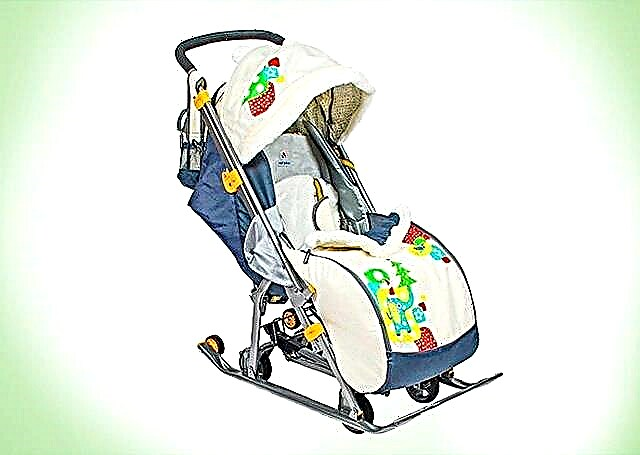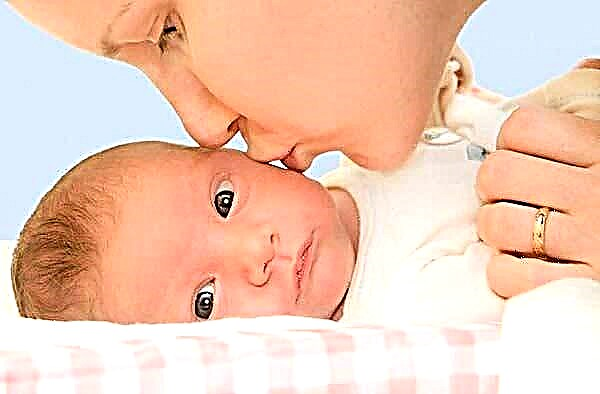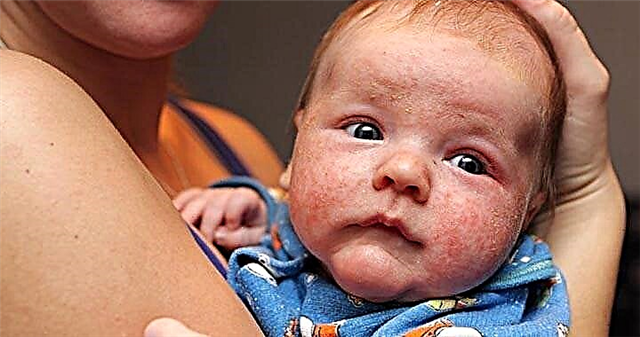Farsightedness in children is a certain type of refractive error, and, consequently, visual acuity, in which the child's eye sees better objects located at a distance than close.
Physiological basis of this refractive error
The structure of our visual system is such that it has a number of functional features. To obtain a clear and non-blurred image, the rays of light must pass through refractive media.
 Collecting in the main focus located on the retina, the light rays stimulate the receptor cells to generate a nerve impulse, which, being converted in the brain, gives an image. In other words, not entirely correct, the resulting image should be displayed on the retina.
Collecting in the main focus located on the retina, the light rays stimulate the receptor cells to generate a nerve impulse, which, being converted in the brain, gives an image. In other words, not entirely correct, the resulting image should be displayed on the retina.
In the case of farsightedness (hyperopia), the main focus lies behind the retina. Everything that is at a distance gets on the retina and, therefore, is displayed. This means that images of objects located close do not fall on the retina, and therefore their outlines appear blurred.
All this is due to the discrepancy between the strength of the refractive media (cornea and lens) and the length of the eyeball. In the farsighted, it is usually slightly smaller.
Farsightedness in children 1 year old is explained by the small size of the eyeball and the imperfection of the visual analyzer, which is actively developing. All newborns, babies, babies suffer from hyperopia. But after a year, with a gradual increase in the size of the eyeball and the development of visual functions, farsightedness usually becomes less, and by the age of 3-4 years it gradually disappears.
However, there is also congenital hyperopia in children. In this case, the child's visual acuity tends not to increase with age, but, on the contrary, to decrease. Congenital hyperopia can also be caused by poor refractive power of the optical system.
Farsighted astigmatism in children, which is also called hyperopic, is a certain congenital feature due to the fact that the refractive power of the cornea or lens is different in different areas (and often in the meridians). As a result, in addition to the fact that objects are better visible at a distance, they also appear to be bent, twisted or broken.
Factors predisposing to hyperopia
Farsightedness in a child can be triggered by one or more factors, which, in combination with the individual characteristics of the structure and functioning of the visual analyzer, lead to this disorder.
Heredity
If at least one of the parents has a so-called refractive error (farsightedness, myopia, astigmatism), then, most likely, the child has all the prerequisites for its development.

Presbyopia (age-related hyperopia), appearing after 45 years, cannot be considered a hereditary factor, since its appearance is associated with age-related weakening of the muscles that change the shape and position of the lens, and initial changes in the structure - opacity, change in density, the appearance of a vacuole.
Ecology and medications used during pregnancy
Any chemical compounds directly or indirectly affect the development of the child in the prenatal period. This does not mean that you should stop taking medications aimed at maintaining your health, or urgently move to another place.
It's just that in some cases we do not always know what kind of water flows from our tap and what kind of air we breathe. Therefore, we cannot predict how this will affect the child.
High visual loads
In cases of low farsightedness, the body is able to try to cope on its own by changing the position of the main lens of the eye - the lens. However, increased visual stress causes muscle fatigue, leading to the progression of hyperopia.
Symptoms suggestive of hyperopia
Farsightedness in children has a number of indirect symptoms that allow considerate parents to suspect this refractive error and consult an ophthalmologist in a timely manner:
- low visual acuity or its decrease. A child 2 - 3 years old examines large enough objects at close or very far distance.
Keep a close eye on the child, whether he is always doing it or just playing. If the baby has enough vocabulary, you can try to test his visual acuity by dropping his toys at different distances. And ask to show you where which one is. A child 4 - 5 years old can try to show pictures, circles, letters at a distance;
- it is difficult for a child to concentrate on activities involving the development of fine motor skills, books. In this case, try to determine if the baby likes what he is doing. Perhaps he just gets tired of fixing his gaze up close, or this occupation is not to his liking;
- after reading creative work, the child complains of a headache;
- the appearance of progressive strabismus. Children under 1.5 years of age may squint their eyes when trying to examine an object. This is due to the imperfection of the gaze fixation mechanisms. If the squint does not decrease, but increases, you should immediately consult a doctor.
There are 3 degrees of hyperopia
- Weak degree (up to 2 diopters). Very often the body is able to cope with it on its own. However, the child may complain of a headache that appears after working with objects at close range. Distance vision is high.
- Medium (2.25 to 5.0 diopters). Decreased visual acuity both at close and far distance.
- High degree (above 5 diopters). Low vision both near and far.
Methods for diagnosing hyperopia
- Determination of visual acuity (visiometry). There are special children's tables for determining vision, they show pictures. Children who know the alphabet are shown letters. If the magnitude of vision is low, then they show cards with sticks drawn on them or fingers that need to be counted. Determination of visual acuity is always considered a subjective method to judge the performance of the visual analyzer. After determining the visual acuity, the maximum vision correction with spectacle lenses is determined. This correction is not final, glasses and lenses cannot be prescribed for it, since true farsightedness can only be determined by achieving complete cycloplegia. Cycloplegia is a condition in which the ability to self-accommodation is blocked with the help of special eye drops.
- Fundus examination (ophthalmoscopy). Allows you to identify the initial stages of organic diseases, one of the manifestations of which is progressive hyperopia.
- Skiascopy in full cycloplegia... Allows you to objectively establish the value and, accordingly, the degree of farsightedness and hyperopic astigmatism.
- Refractometry... A hardware method that allows you to measure the strength of the refractive system of the eye, to reveal the astigmatic component.
- Ultrasound procedure (A-scan and B-scan mode). Allows you to determine the anterior-posterior size of the eye (eye length), as well as visualize a number of intraocular pathologies.

Treatment of hyperopia in children
There are conservative and surgical methods for treating hyperopia in children.
The main non-operational method is the selection of spectacle or contact correction.
 An ophthalmologist can prescribe glasses for hyperopia only after reaching full cycloplegia. They begin to wear them while the effect of the drug has not yet ended, and the pupil is still wide. Very often, children do not want these drugs to be instilled into their eyes, since after them it becomes worse to see.
An ophthalmologist can prescribe glasses for hyperopia only after reaching full cycloplegia. They begin to wear them while the effect of the drug has not yet ended, and the pupil is still wide. Very often, children do not want these drugs to be instilled into their eyes, since after them it becomes worse to see.
It must be remembered that the effect of the drug is temporary, and non-observance of the doctor's recommendations leads to the fact that due to a certain discomfort that occurs when wearing without achieving persistent cycloplegia, the child will take off his glasses. In this case, farsightedness will either progress, or vision will be significantly reduced, which can lead to amblyopia - the "lazy eye" syndrome.
If spectacle vision correction is adequate and the child is old enough to wear lenses, contact vision correction may be used. In the case of hyperopic astigmatism, it is possible to select lenses with an astigmatic component.
To avoid unwanted diseases, you should follow the rules of wearing and caring for lenses, which will be explained in detail by an ophthalmologist.
Operative treatment can only be performed by those who are over 18 years old. It consists in carrying out one of the types of laser vision correction, implantation of special phakic lenses or in the planned removal of the lens with the implantation of an intraocular lens. This age was not chosen by chance, since it is believed that it is up to this age that anatomical and functional development of the organ of vision occurs. For patients with astigmatism, there are toric lenses that take into account the astigmatic component.
Surgical treatment is selected taking into account all the individual characteristics of the patient. It is possible to carry out combined surgical interventions in order to obtain the highest visual acuity.



